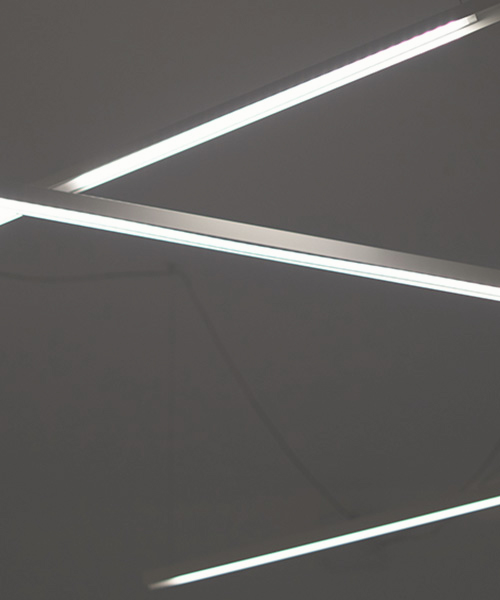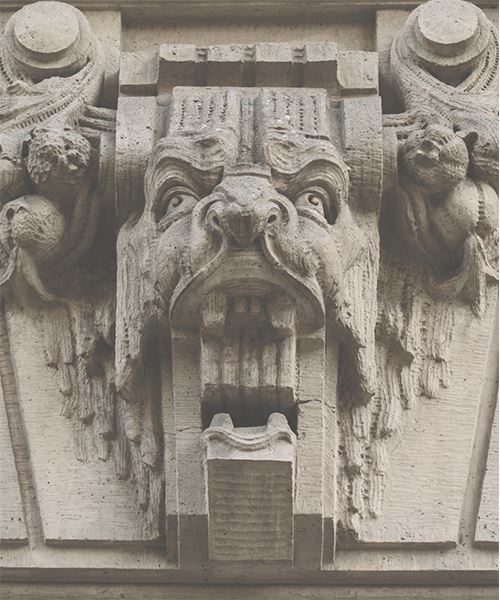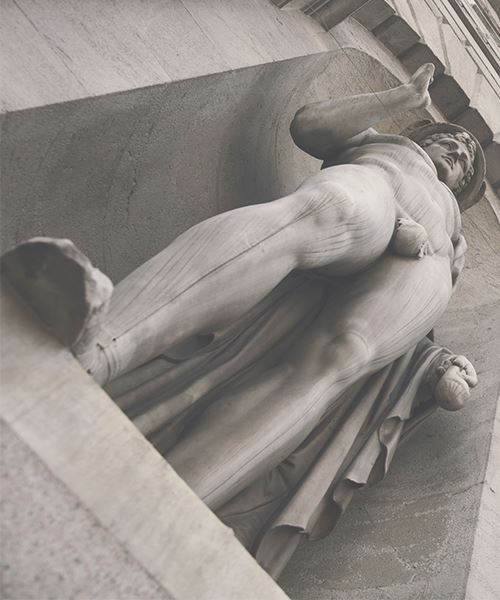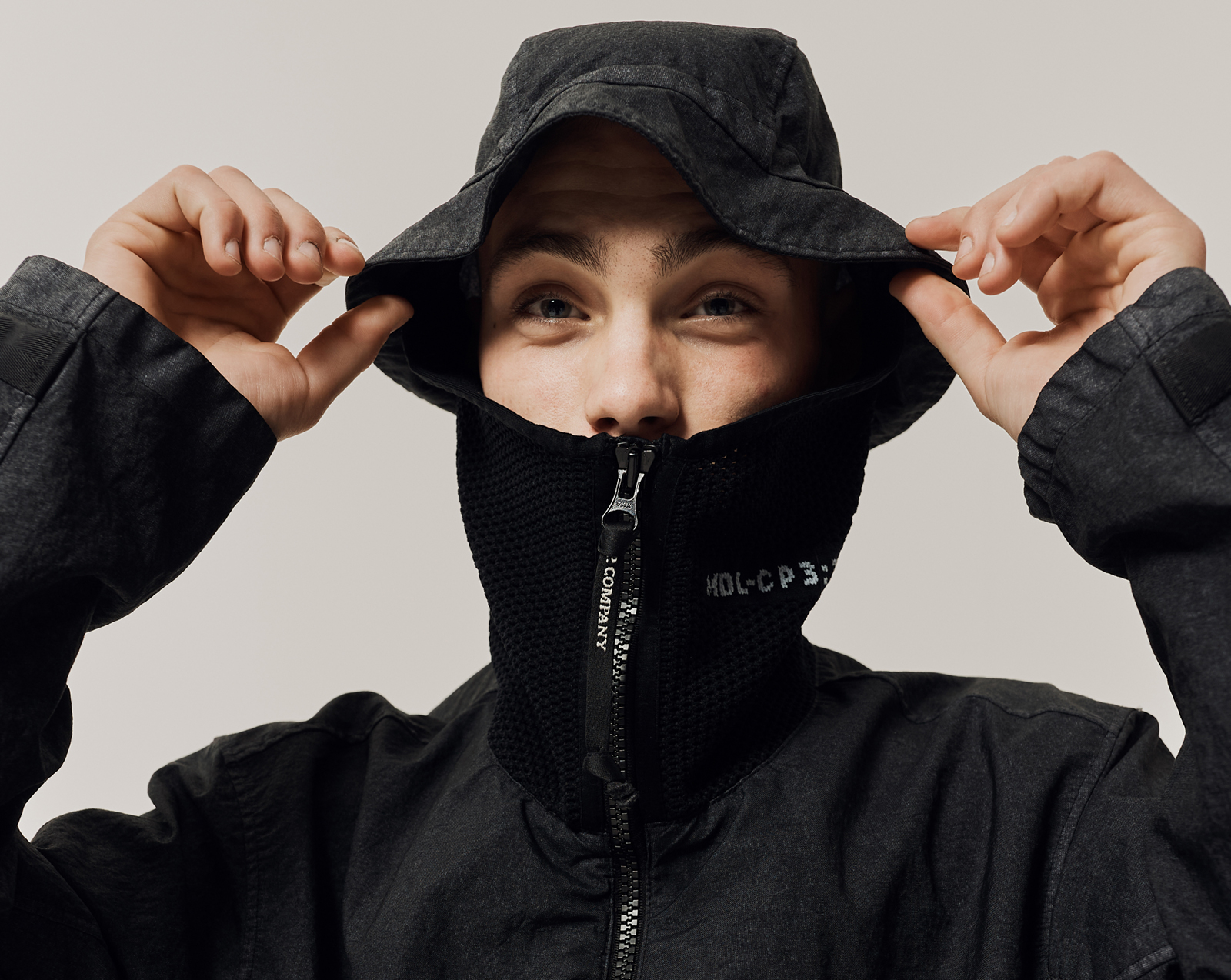C.P. COMPANY SPRING SUMMER 2022 ADVERTISING CAMPAIGN
Continuing the project developed for its 50th anniversary in 2021, C.P. Company has chosen to photograph five people for whom wearing, buying, selling, studying C.P. Company clothing has intersected with experiences of cultural interest.
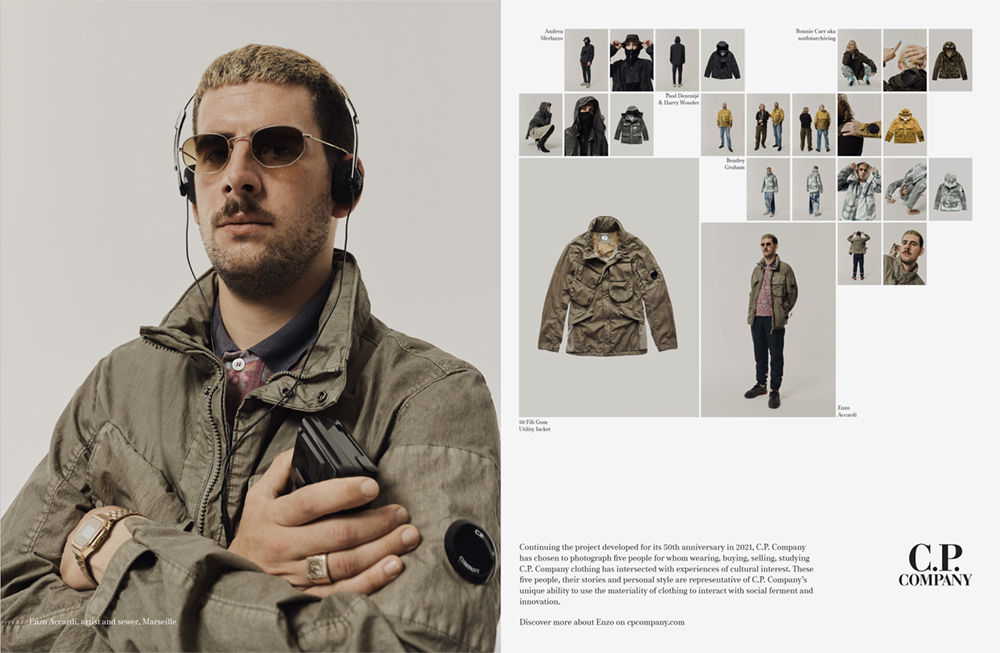
Photographed by the talented Neil Bedford, the casting features people very different from each other in cultural backgrounds, age, gender and interests.
For SS022 season five people interpret seasonal jackets with their personal style, representing the C.P. Company’s unique ability to use the materiality of clothing, to interact with social ferment and innovation.
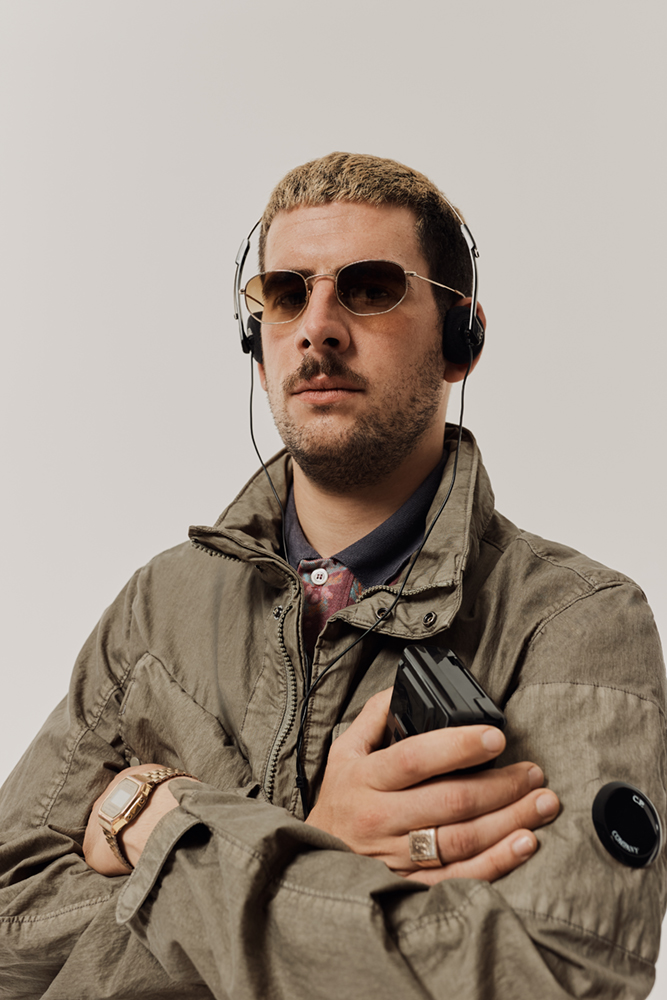
Enzo Accardi is an artist born and raised in Marseille but with a deep passion for Italy. “I sew, therefore I love C.P.” is the way he – succinctly – explains his passion for the brand.
For his portrait, Enzo is dressed the same way he dresses more or less every day: tracksuit, sneakers, ultra-functional multi-pocket jacket, in this case a garment dyed C.P. Company 50 Fili gum field jacket with unique mesh pocket system subtly integrated into its classic military shape. The Lucio Dalla cassette which he carries in his pocket (and balances on his shoulder) is a great album but, also, of special significance for its cover art, designed by Massimo Osti in 1990.

Bonnie Carr is a London-based design consultant working across genres and formats, from journalism to startups to brand strategy and garment design. She has something of a cult-following online thanks to her instagram account Not For Archiving™ in which she clinically dissects the formula, both technical and cultural, behind sportswear garments both famous and forgotten from the last 30 years.
Bonnie defines her two looks for this C.P. Company campaign – and her approach to dressing in general – as “that thing the British are best at: combining high and low culture”. For each jacket, a garment dyed KAN-D nylon “re-issue” of the iconic early 2000s 500 Miglia shape and this season’s Metropolis made from resist-dyed Co-ted nylon, Bonnie has styled herself with layer on layer of detailed references appropriate to her own understanding of C.P. Company’s significance as well as paying heed to her passion for culturally reading – and coding – outfits.
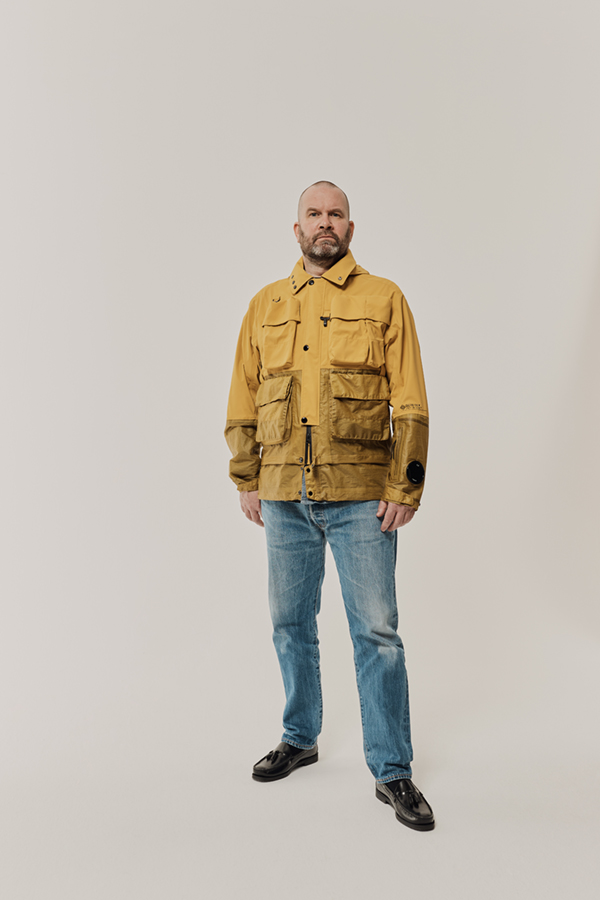
Over four decades, beginning in the early 1970s in the small town of Arnhem, 40 km west of Amsterdam, Harry Wonder created some of the world’s best, most future-looking men’s clothing stores. Amongst all of these Bubble Gum, located in the town’s oldest remaining stone building, erected in 1380 and selling a mix of early Nike, military deadstock, vintage and Italian sportswear, stands out as the most legendary and influential.
And it was in the window of the Bubble Gum (which would later take the name The Globe) that Paul Dezentjé, long-time C.P. Company family member, saw his first piece of Massimo Osti design. Enamoured he ventured in to ask the price. When Paul told Harry that the jacket was too expensive for his pockets Harry, in his simple and honest style said “come work here on weekends and pay it off.” Paul agreed and ended up working for Harry for the next 12 years. “Harry changed my life”, he says. “Harry taught me how look past colours and first attractions, he taught me to look and to touch and to understand how things are made.” And it was this closer appreciation of details that allowed Paul to fall in love with C.P. Company and its famously subtle details.
In C.P. Company’s campaign Paul wears a component dyed extendible Gore-Tex goggle jacket.
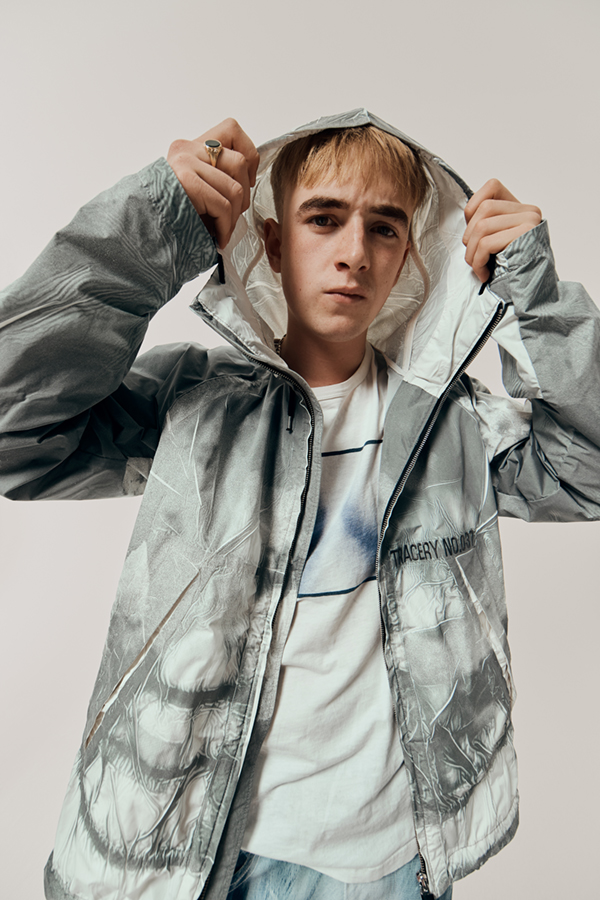
Bentley Graham has spent the first two years of his BA in Menswear at the University of Westminster unable to share a classroom with his peers due to COVID restrictions.
The famous Westminster Menswear Archive founded by Professor Andrew Groves, though, has remained open and consultable throughout. And it is here that Bentley has “educated himself”. As Bentley explains, “in order to visit the archive you have to book certain items but when you get there one of the most interesting things to do is look at all the things left out by people who visited before you. You’ll start touching or having a look at things left out and all of a sudden Daniela Sprecher or Andrew Groves come up to you and tell you a million things about the piece. And that’s how I came to really getting into C.P. Company, by looking at pieces by the brand that older students had requested…”
For his portrait, Bentley chose to wear C.P. Company’s latest iteration of the “Tracery” series of sublimation printed outerwear, together with a pair of trousers he sewed and printed himself using the delicate cyanotype process, a technique he has grown confident in using thanks also to the “lesson” studying C.P. Company has about including the mistake or unknown consequence into the own manufacturing processes.
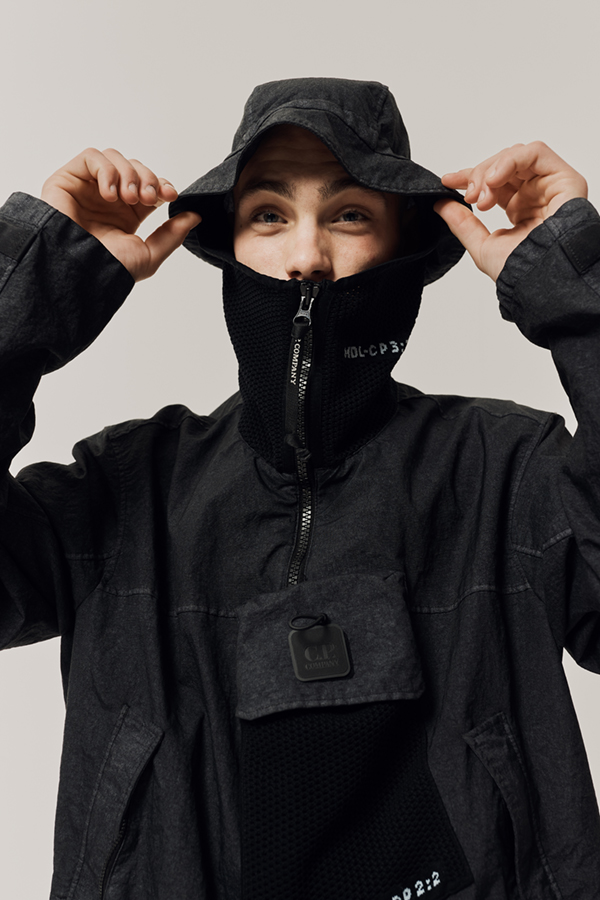
Andrea Sferlazzo is a 17-year old kid from Anzio, a seaside town south of Rome. Like many precocious fans of well-made clothing he discovered C.P. Company through and older relative, in this case his uncle Daniele Sferlazzo, designer and vintage Italian sportswear dealer. Andrea’s personal style represents a contemporary interpretation of Paninaro spirit that you might find alive in the high school halls of any major Italian city: Air Max 97s, classic American 5-pocket jeans, street or skateboarding label sweatshirt and an advanced piece of Italian sportswear outerwear.
For his portrait Andrea chose to pair his usual look with C.P.’s new “scavenger” Metropolis series jacket, made from Co-ted nylon with an oversized version of the original 1999 pocket system and integrated bucket hat hood shape.

